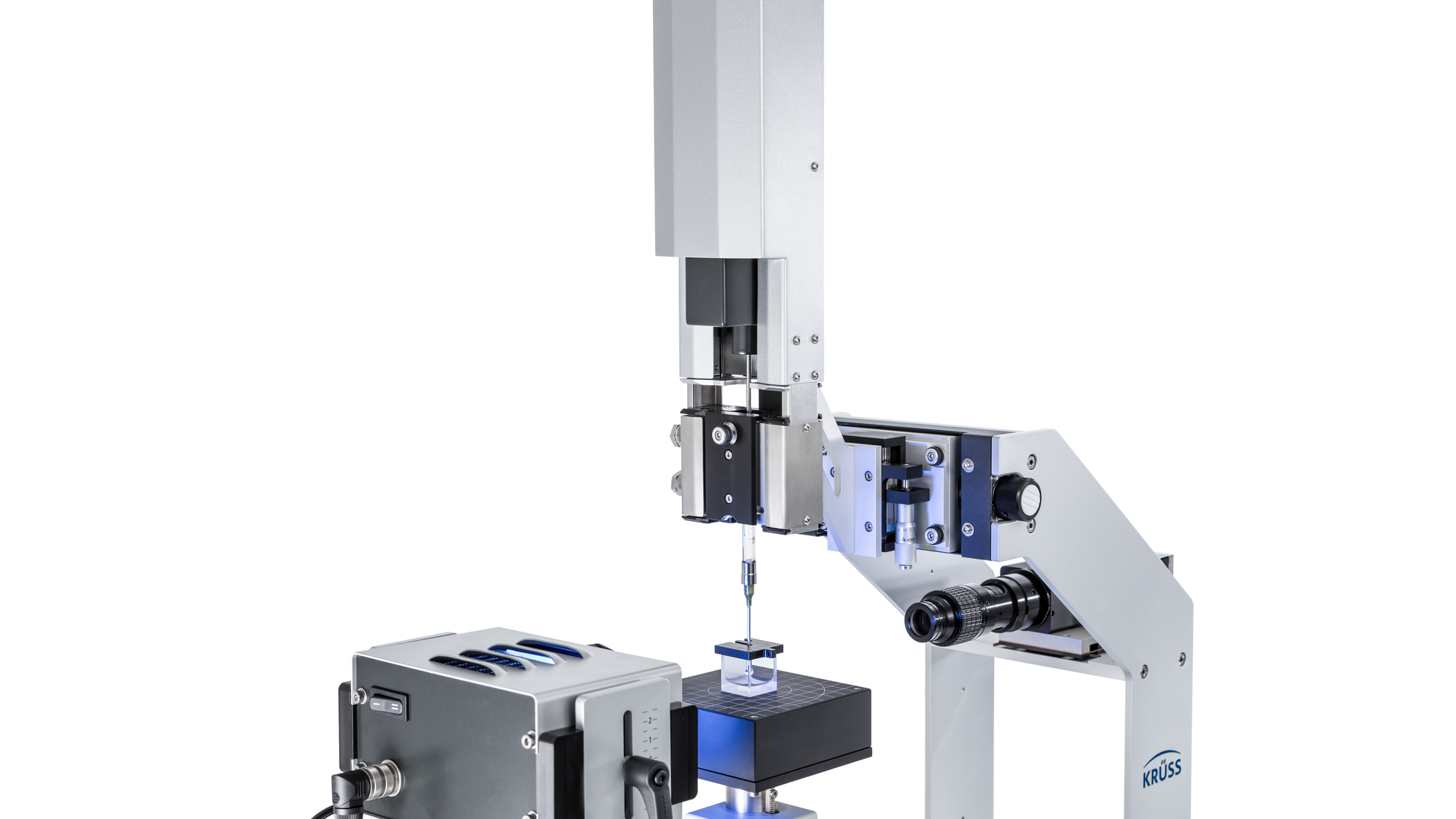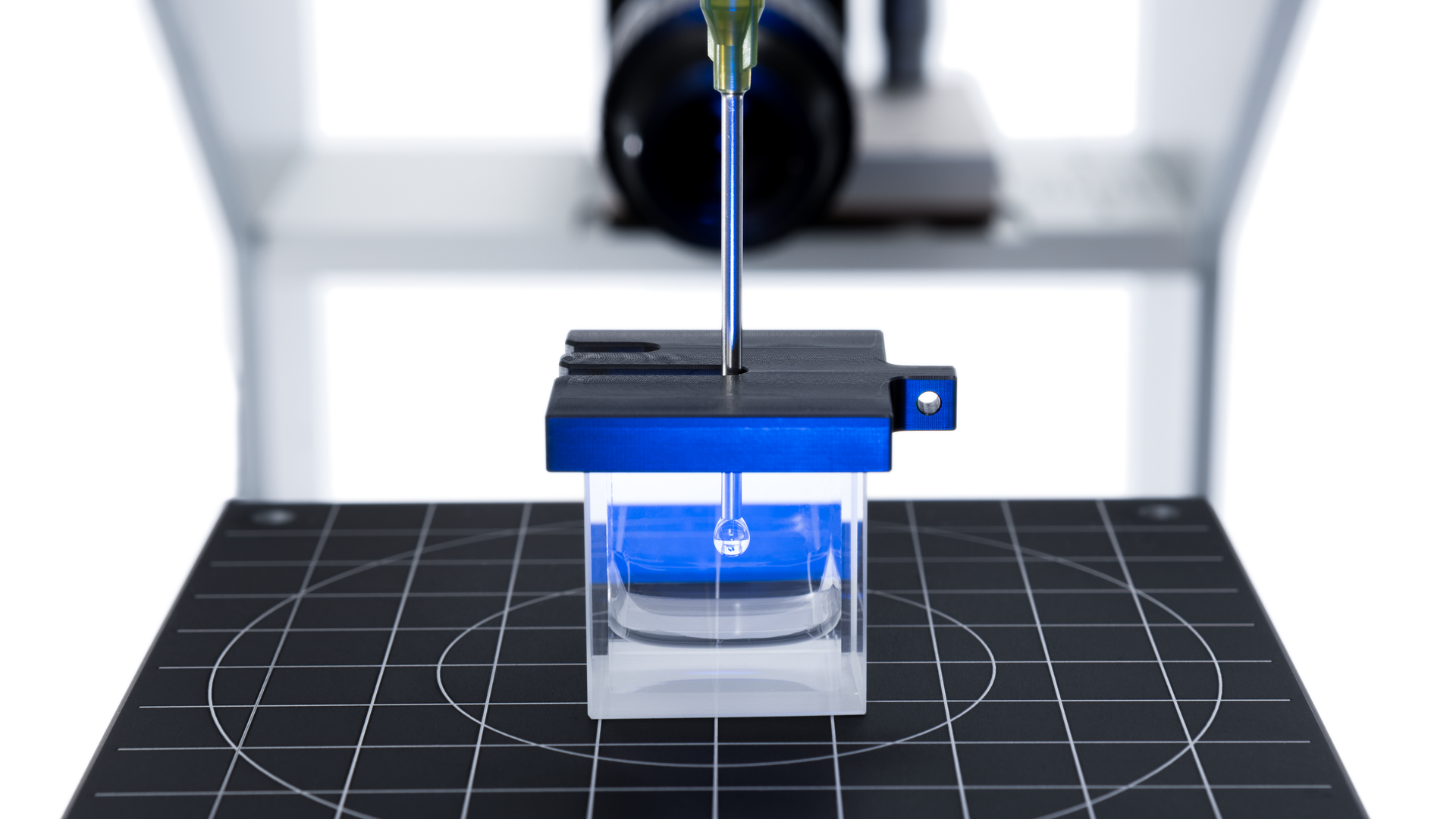Drop Shape Analyzer
DSA30R – Analyses in interfacial rheology – time-saving and reproducible
Emulsions and foams are constantly in motion during production or transport. The interfaces of droplets or bubbles are stretched during these processes and the surface tension or interfacial tension responds to the stretching. The speed and degree of this response have an impact on the stability of food or personal care products and influence the yield in enhanced oil recovery (EOR). Interfacial rheology measurements with the DSA30R Drop Shape Analyzer give the relevant results for optimizing products and processes.
Applications
-
Emulsions and foams for food or personal care
-
Surfactant flooding mixtures and foam in enhanced oil recovery (EOR)
-
Demulsifiers
-
Defoamers and anti-foaming agents
-
Surfactant development
Measuring methods
-
Interfacial rheological behavior of a pendant drop or a bubble with periodically alternating volume
-
Surface or interfacial tension using the curvature of a drop or bubble at the tip of a needle
-
Surface tension using the curvature of a perfectly symmetrical drop on a circular sample pedestal
-
Carrying out a measurement up to 20 consecutive times and displaying the results together
Measuring results
-
Elastic modulus (storage modulus) E'
-
Viscous modulus (loss modulus) E''
-
Static surface and interfacial tension
Elasticity and viscosity analysis in a wide dynamic range
The measuring principle of the DSA30R involves evaluating video images of drops or gas bubbles at a dosing needle to measure the surface or interfacial tension (SFI/IFT). The interface size is sinusoidally changed during this process. The SFT/IFT is measured as a function of the surface change and is also sinusoidal in the case of samples containing surfactants.
The dosing unit’s extremely precise piezo drive enables exact sine waves in a frequency spectrum of 0.001 to 20 Hz, so the measurements cover a very wide dynamic range.
The elastic modulus E’ and the viscous modulus E’’ result from the evaluation. E’ goes hand in hand with the change to the surfactant’s surface concentration due to stretching and compression; E’’ reflects the change in SFT/IFT with respect to time due to diffusion and interfacial adsorption of the dissolved surfactant. Both quantities are related to the mechanical and temporal stability of foams and emulsions.
Quick, easy and exactly repeatable measurements
Many innovations around the DSA30R turn formerly complex interfacial rheological analytics into an easy-to-perform method with quick sample changing. The filled glass syringe is inserted in a few simple steps and coupled automatically to the dosing feed.
Cleaning is completely unproblematic thanks to the separation between the liquid reservoir and the oscillation drive. The same applies to bubble-free filling, which prevents falsified results due to unwanted damping of the vibration.
The entire measurement process, from drop generation and oscillation to the results output, is fully automatic. This is ensured with easy-to-create ADVANCE software automation programs, which also provide optimal repeatability.
Measurements at controlled thermal conditions
To determine the influence of temperature, or to make investigations of high-viscosity systems easier, the syringe is embedded in a temperature-controlled sleeve for measurements between -10 and 70 °C. The temperature of the surrounding phase can also be controlled. Moreover, the start of certain processes such as the beginning of oscillation can be automatically linked to the target temperature being reached. This ensures reproducible conditions without user intervention.
YOUR INSTRUMENT'S BRAIN

-
Intuitive software with a workflow-oriented user interface
-
Swift and repeatable analyses thanks to measurement templates and powerful automation functions
-
Superior algorithms for image analyses provide for precise results even with difficult images
-
A wide range of evaluation methods makes ADVANCE a reliable scientific tool

Technical Services for your instrument
Learn how we support you from day one and help you make the best use of your instrument with the longest service life possible.
Set Up and Installation
Don’t lose time and let measuring be the first thing you do with your instrument.
Training
Start your analyses with solid know-how and refresh and deepen it during your instrument’s life cycle.
Maintenance and Repair
Expect your instrument to be a reliable long-term employee.



















